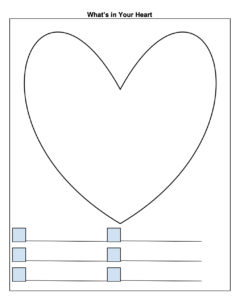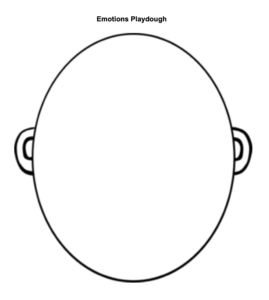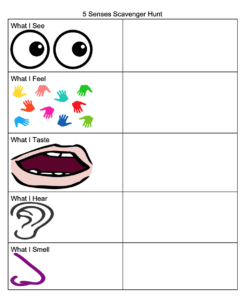If you’re looking for therapeutic activities for children, this article is for you. Parents and children are living in unprecedented times. The Coronavirus pandemic, also known as COVID-19, has devastated families, health, the economy, and most worrisome the mental health of an increasing number of individuals around the globe.
 Not only are adults losing jobs, worrying about the future, while being stuck at home all day, but children have lost contact with their peers, stopped attending school, and are stuck at home as well. Being cooped up is bound to cause feelings of anxiety, depression, and being stuck. San Diego Christian Counseling can offer support for these challenges.
Not only are adults losing jobs, worrying about the future, while being stuck at home all day, but children have lost contact with their peers, stopped attending school, and are stuck at home as well. Being cooped up is bound to cause feelings of anxiety, depression, and being stuck. San Diego Christian Counseling can offer support for these challenges.
As much as we try to shelter our children from the struggles of the outside world, they feel all the same feelings we do. Children are intuitive. Even if they have been sheltered from the news, they likely understand this is not “normal.”
Therapeutic Activities for Children
Research suggests that therapeutic activities for children and play therapy allow children an outlet to express different emotions, learn coping skills, and decrease anxiety and depression. Below are some suggested therapeutic activities for children to help you get out of the Coronavirus rut.
Activity#1: What is in Your Heart?
Click here for printable worksheet

Purpose: This activity helps to normalize emotions for children. Because there is no right or wrong way to do this activity, it allows children to be creative. If your child is hesitant to do this activity, you can do it alongside them and narrate your thought process. This will help them to see how it can be completed as well as guide them through the process.
Materials: Crayons, colored pencils, markers, paper
Description: Draw a large heart on your paper or use this template. Have your child choose a color to match an emotion (for example blue can be sadness or red can be anger). After labeling the colors with emotions, you will have your child color in how much of their heart is feeling that emotion. Throughout the activity ask questions related to the different emotions your child may be experiencing.
Activity #2: Emotions Playdough
Click here for printable worksheet

Purpose: This activity helps children to recognize emotions in a fun way. It can also be a way to engage in deeper conversations regarding emotions.
Materials: Playdough (regular or homemade), blank face worksheet (bonus points for lamination).
Note: homemade playdough is another activity you can do with your child’s help. Recipe for homemade playdough
Directions: Use this printable blank face chart or a homemade face chart and have your child create the face to show an emotion such as sadness with playdough. After each emotion is made, talk about times your child has felt this emotion.
For younger children explain the different emotions they may feel and have them practice mimicking the face they created. For older children, allow them to be creative and make the face solely out of playdough without the face guide.
Activity #3: Calm Down Jars
 Purpose: This activity not only gives your child a fun project to create, but it can also be used in times of stress, anxiousness, to calm down during a time out, or even during a long car ride.
Purpose: This activity not only gives your child a fun project to create, but it can also be used in times of stress, anxiousness, to calm down during a time out, or even during a long car ride.
Materials: Empty plastic water bottle, warm water, glitter glue, glitter
Examples: Calm Down Jars
Directions: Mix warm water, glitter glue, and glitter in the water bottle and close the lid tightly. Let your child shake the water bottle and watch the materials float around. This is a calming activity your child can do in times of distress, in the car, or when bored.
Activity #4: Slime
Purpose: This activity allows the creative process to flow. It teaches children a science lesson, gives them an activity to improve their ability to follow directions, and provides them with a coping mechanism for the long term.
Materials: At home slime recipe
Directions: Make slime at home with your child(ren). Allow them to run the slime through their fingers as an anxiety calming tool. Pro tip: add lavender oil into the slime for an extra calming effect.
Activity #5: Calm Down Toolbox
Purpose: Creating a coping toolbox allows children to process emotions, learn new coping skills, and have a long-lasting coping mechanism they can keep with them. This toolbox allows your child to house all their coping skills in one readily available place.
Materials: Art supplies, cardstock cut into 4X6 cards, hole-punch, keyring, 3 tangible objects that can be used as a coping tool (such as calm down jar, fidget toy, stress ball), cardboard box or bin
 Directions: Explain to your child that a coping skill is a tool or technique you can use to calm your body down when you are dealing with difficult or intense emotions. If using a cardboard box, have your child decorate their coping skills toolbox. After decorating their toolbox, decide together which items should be included in their coping skills toolbox.
Directions: Explain to your child that a coping skill is a tool or technique you can use to calm your body down when you are dealing with difficult or intense emotions. If using a cardboard box, have your child decorate their coping skills toolbox. After decorating their toolbox, decide together which items should be included in their coping skills toolbox.
Once the items have been placed in the toolbox, brainstorm other ways of coping that are not tangible items, such as deep breathing or blowing bubbles. Have your child write out or draw that coping skill. Once the cards have been made, hole-punch and place them on a keyring in the toolbox.
Activity #6: Five Senses Scavenger Hunt
Click here for printable worksheet

Purpose: Humans have five basic senses: sight, hearing, smell, taste, and touch. The five senses scavenger hunt is used to connect your child with their body which in turn teaches about the world around them. Learning about our bodies is important in recognizing future emotions, pains, and being open about how we perceive the world.
Materials: homemade or printable worksheet, pencil/pen
Directions: Describe to your child the five senses listed above. Have them search for each of the senses in the house, the backyard, or on a family walk around the block.
Activity #7: Scavenger Hunt
Purpose: A scavenger hunt can provide children with an activity that stimulates their brains, organizes items into categories, and uses nature as a grounding technique.
Materials: Homemade or printable worksheet, pencil/pen
Scavenger Hunt Template Ideas
Directions: Provide your child with a list of items to search for around the house, outside, or on a long drive. The list can include specific items, categories of items, items that start with a certain letter, etc.
Activity #8: Make Art from Nature
Purpose: Nature provides everyone with a sense of peace and grounds us when we become overwhelmed. Taking a short walk outside can improve your mood drastically and provide a new tactile experience for your child. Using items from outside can provide your child with a creative outlet as well.
Materials: Art supplies, nature
 Directions: Take your child outside for a walk around the neighborhood. Have them collect anything that gains their attention (grass, leaves, flowers, rocks). Use these items to create any type of artwork your child wants to (ex: bracelet, paint with the materials).
Directions: Take your child outside for a walk around the neighborhood. Have them collect anything that gains their attention (grass, leaves, flowers, rocks). Use these items to create any type of artwork your child wants to (ex: bracelet, paint with the materials).
Activity #9: Make Puppets for a Puppet Show
Purpose: An at-home puppet show promotes creativity and allows children to process emotions. Children work through emotional dilemmas through play. Allowing them to make puppets and create a puppet show gives a glimpse into their thoughts and feelings.
Materials: old socks, googly eyes, art supplies
Directions: Have your child create puppets out of old socks using the various art supplies. Use these puppets to create a puppet show in which they lead the play.
Activity #10: Cooking Together
Purpose: Cooking together in the kitchen promotes togetherness, teaches math equations and fractions, increases healthy eating, and can build self-confidence in learning new tasks.
Materials: Ingredients for your favorite meal
Directions: Plan out your meal and ingredients with your child. Pre-measure the ingredients and allow them to pour them into the bowl. Allow them to help in any safe way. Pro tip: teach them how to clean up the kitchen after you are done cooking.
Recipes to make with children
Summary
Whether you or your child are in a rut from the coronavirus, know that is completely normal. However, there are ways to get unstuck. The above-mentioned therapeutic activities for children can provide you with ways to engage with your child in a fun way.
If you or your child are feeling you are in more than just a “rut,” consider Christian counseling as a next step in your journey to healing. Feel free to contact me or one of the other counselors in the San Diego Christian counseling directory to schedule an appointment.
“The World is Temporarily Closed”, Courtesy of Edwin Hooper, Unsplash.com, CC0 License; “Emotive Eggs”, Courtesy of Tengyart, Unsplash.com, CC0 License; “Finding the Way”, Courtesy of Natalie Fox, Unsplash.com, CC0 License; “Cooking with Mom”, Courtesy of Gustavo Fring, Pexels.com, CC0 License


